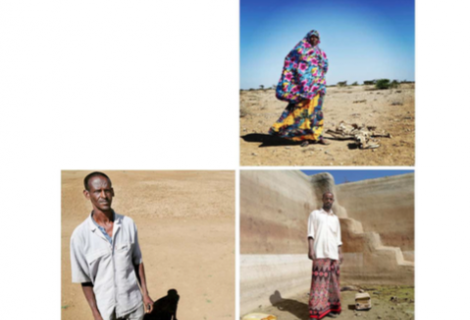
KEY FINDINGS
• 12300 persons of 2015 HHs(5% HH and 5% population) in the LRP villages are affected in worst form and 108133 persons (of 18021 HHs) (40% population) affected severely;
• 35-40% families are facing acute water crisis for human and livestock consumption. Additional 50% families will no longer have access water from sources in respective village in next 15 days;
• Available water in water sources is not suitable for human consumption. But, people’s awareness on quality/safety of water is limited, so water is explained by availability in quantity, not quality.
• As on date, the food security situation is grim. 89% families do not have food stock. Among the families who do have food stock, 74% are coping by buying food from the markets and others families are receiving support from the community. While most of them do not have income to buy food, price of staple food has almost doubled.
• Poorest families has reduced food intake by reducing number of times and items of food (milk, meat, vegetables), they normally consume. 10% families suffered hunger (suffered without food) during the week before the assessment.
• 35% families take food once a day and 55% families take food twice a day. It has contributed to malnutrition of children, women and elderly persons;
• Starvation and malnutrition have affected more than 50% of children, women and elderly persons;
• 35-40% of livestock died due to scarcity of fodder, pastures and water. The livestock is also facing
drought health problems like diarrhoea;
• 78% of the families do not have fodder stock. More than 40% (part family members) have migrated
along with their livestock to coastal area in search of water and pastures;
• High incidence of water and personal hygiene and sanitation related diseases is widespread like
diarrhoea, urinary tract infection (UTI). The incidence among children and women are even higher.
• Work pressure on children has increased. 48% of children are malnourished and 46% of them are
exposed to various health risks;
• Work pressure on women has increased. 50% women are exposed to various health risks;
• Elderly persons have also exposed to health risk;
• Communities coping mechanisms has almost exhausted;
• Government is poorly resourced to address the impact of the disaster and unable to mobilise
resources;
• Though the international Humanitarian Response Plan (HRP) for whole Somalia was only 36 percent
funded, there was no allocation of the Somalia Common Humanitarian Fund (CHF), 2015 in drought hit
Maroodi-Jeh and Gabiley regions of Somaliland.
• Though there are plans for intervention, aid agencies are yet come up with clear intervention plan;
and
• Coordination among Government and Aid agencies has been weak.
As forecasted, if the impact of El - Nino get extended till 2016 and if the Gu rain fails in next season the situation will deteriorate further to an extreme situation. It will be a massive disaster for the nation, which will call for major relief operation.